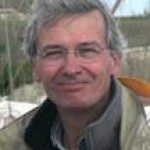Link to Pubmed [PMID] – 20507885
Microbiology (Reading, Engl.) 2010 Sep;156(Pt 9):2807-17
The type III secretion apparatus (T3SA) is a central virulence factor of many Gram-negative bacteria. Its overall morphology consists of a cytoplasmic region, inner- and outer-membrane sections and an extracellular needle. In Shigella, the length of the needle is regulated by Spa32. To understand better the role of Spa32 we searched for its interacting partners using a two-hybrid screen in yeast. We found that Spa32 interacts with the 33 C-terminal residues (CC*) of Spa40, a member of the conserved FlhB/YscU family. Using a GST pull-down assay we confirmed this interaction and identified additional interactions between Spa40 and the type III secretion components Spa33, Spa47, MxiK, MxiN and MxiA. Inactivation of spa40 abolished protein secretion and led to needleless structures. Genetic and functional analyses were used to investigate the roles of residues L310 and V320, located within the CC* domain of Spa40, in the assembly of the T3SA. Spa40 cleavage, at the conserved NPTH motif, is required for assembly of the T3SA and for its interaction with Spa32, Spa33 and Spa47. In contrast, unprocessed forms of Spa40 interacted only with MxiA, MxiK and MxiN. Our data suggest that the conformation of the cytoplasmic domain of Spa40 defines the multi-step assembly process of the T3SA.

